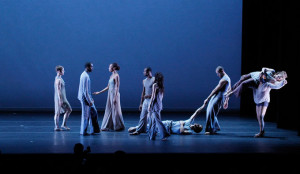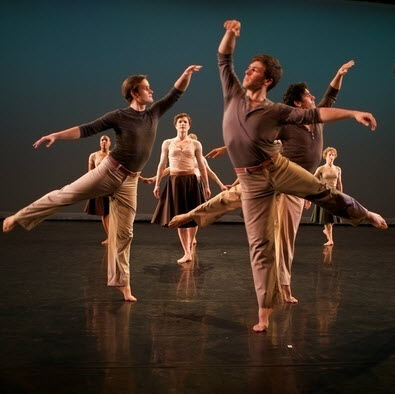Play and Play: An Evening of Movement and Music
 In Moore Theater, which provided an excellent intimate environment for this concert. The first dance was nicely suited to the Mozart quartet. The second piece was Continuous Replay, which started with a nude dancer doing a series of gestures. The other dancers slowly stripped and then dressed again, repeating the strange set of gestures. We learned after the show that the founder Arnie Zane was a martial artist, and this was a section from the Hand Dance. After seeing this, I think all modern dance should be nude!
In Moore Theater, which provided an excellent intimate environment for this concert. The first dance was nicely suited to the Mozart quartet. The second piece was Continuous Replay, which started with a nude dancer doing a series of gestures. The other dancers slowly stripped and then dressed again, repeating the strange set of gestures. We learned after the show that the founder Arnie Zane was a martial artist, and this was a section from the Hand Dance. After seeing this, I think all modern dance should be nude!
The last dance had both quartets playing an octet by Mendelssohn written when he was 16. It featured lots of jumping related to water like belly flops and diving, evoking the joy of the quote by Jenny Holzer. The dedication is to Demian (the D of the title), who was dying of AIDS as the piece premiered, but apparently was carried through the dance.
In the Q&A after the show, Janet Wong (associate artistic director of Bill T. Jones dance company) and Nick Kitchen (first violin, Borromeo String Quartet).
The musicians used laptops with scores showing all the parts, and foot pedals for page turning. Normally their scores don’t show all parts or else they have to turn the page too often.

